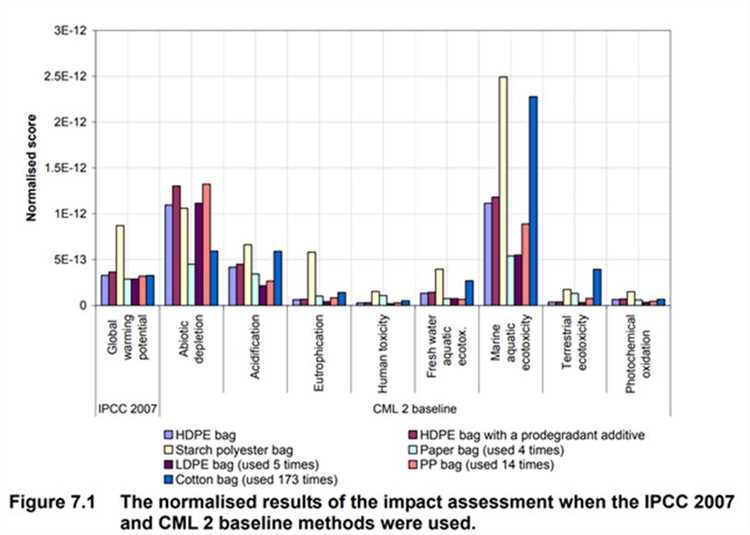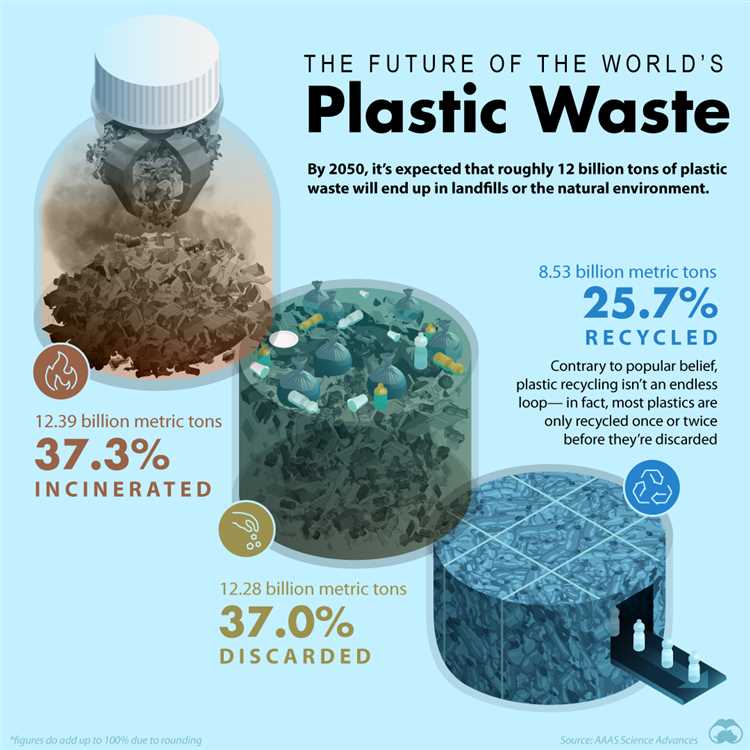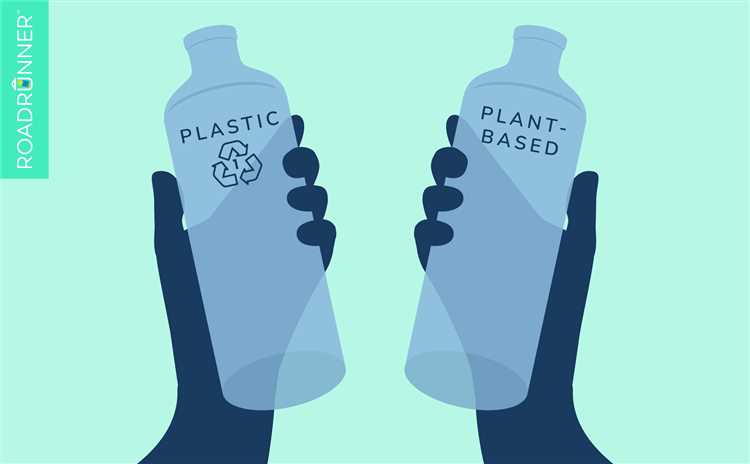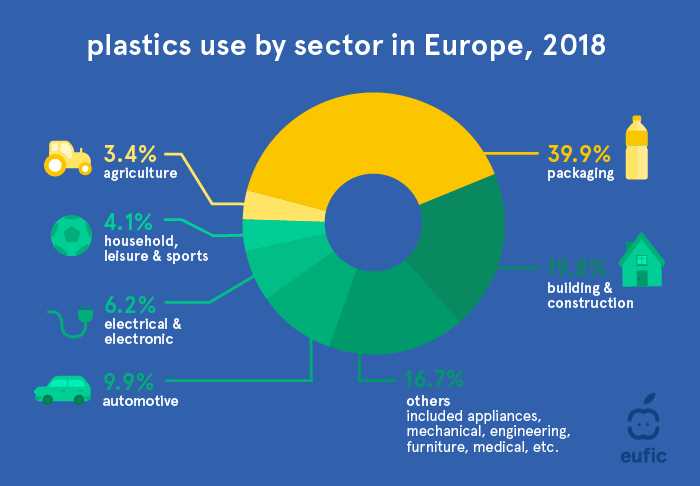
In today’s world, where sustainability has become an urgent global priority, finding alternatives to traditional plastics is paramount. Plastic waste has become a significant environmental concern, with millions of tons ending up in landfills and water bodies each year. Therefore, scientists and researchers are now focusing on discovering innovative solutions that can revolutionize the plastic industry and pave the way for a greener future.
One such solution is the development of sustainable plastics that are not only biodegradable but also have a minimal carbon footprint throughout their lifecycle. These plastics, commonly known as bioplastics, are derived from renewable resources such as plants, algae, or even waste materials. Unlike traditional plastics, which are synthetic and derived from non-renewable fossil fuels, bioplastics offer the promise of reduced environmental impact.
The most widely studied and promising type of bioplastic is polyhydroxyalkanoates (PHA). PHA is produced by bacteria through the fermentation of plant sugars and various carbon sources. What makes PHA truly sustainable is that it is not only biodegradable but also completely compostable, meaning it can break down into natural elements without leaving behind any harmful residue. This makes PHA an excellent alternative to traditional plastics, particularly in single-use applications such as packaging and disposable utensils.
Another notable sustainable plastic is polylactic acid (PLA), which is derived from plant sources such as cornstarch or sugarcane. PLA has gained popularity due to its carbon neutrality and biodegradability. It is often used in a variety of applications, including packaging, textiles, and even 3D printing. However, PLA does have some limitations, such as its inability to withstand high temperatures, which makes it less suitable for certain applications.
As the demand for sustainable alternatives to traditional plastics continues to grow, researchers are also exploring new types of bioplastics such as polybutylene adipate terephthalate (PBAT) and polyhydroxyurethane (PHU). These plastics offer unique properties, including better flexibility and biodegradability, making them suitable for a wide range of applications.
In conclusion, the discovery and development of sustainable plastics are crucial for a greener future. Bioplastics like PHA and PLA offer promising alternatives to traditional plastics, with their biodegradability and reduced carbon footprint. With further research and innovation, these sustainable plastics may someday replace conventional plastics and help preserve our planet for future generations.
- The Importance of Sustainable Plastics
- Understanding Different Types of Plastics
- Assessing the Environmental Impact of Plastics
- Exploring Sustainable Plastic Alternatives
- Advancements in Biodegradable Plastics
- Choosing the Most Sustainable Plastic for a Greener Future
- Bioplastics
- Recycled Plastics
- Q&A:
- What is the current state of plastic pollution?
- What is the most sustainable plastic?
- How can we reduce plastic usage?
- What are the challenges of finding a sustainable plastic alternative?
- What are the benefits of using sustainable plastics?
- What is the most sustainable plastic?
The Importance of Sustainable Plastics

Sustainable plastics play a crucial role in creating a greener future for our planet. As the world grapples with the environmental challenges posed by traditional plastics, it has become increasingly important to find sustainable solutions that minimize harm to the environment.
One of the key benefits of sustainable plastics is their reduced carbon footprint. Traditional plastics are made from fossil fuels, which emit greenhouse gases during their production and disposal. In contrast, sustainable plastics are made from renewable resources, such as plant-based materials or recycled plastics, which significantly reduce carbon emissions.
| Benefits of Sustainable Plastics | Features |
|---|---|
| 1. Reduced Environmental Impact | Sustainable plastics help minimize the damage done to ecosystems and wildlife, as they are designed to break down more quickly and safely. |
| 2. Resource Conservation | By using renewable materials or recycled plastics, sustainable plastics help conserve natural resources and reduce reliance on fossil fuels. |
| 3. Waste Reduction | Sustainable plastics can be recycled, reducing the amount of plastic waste that ends up in landfills and oceans. |
| 4. Innovation Potential | Investing in sustainable plastics encourages innovation in the development of new materials and technologies that can further enhance environmental sustainability. |
Furthermore, sustainable plastics help reduce the pollution caused by plastic waste. It is estimated that over 8 million tons of plastic enter the oceans each year, posing a significant threat to marine life and ecosystems. Sustainable plastics can be designed to degrade more quickly and safely, minimizing their impact on the environment.
In conclusion, the importance of sustainable plastics cannot be overstated. By opting for sustainable alternatives, we can significantly reduce our environmental footprint, protect ecosystems, and move towards a greener future. It is up to individuals, businesses, and governments to prioritize sustainability and invest in the development and adoption of sustainable plastics.
Understanding Different Types of Plastics

Plastics are a versatile and widely used material in our daily lives. Understanding the different types of plastics is crucial for making sustainable choices and reducing our environmental impact. Here are some common types of plastics:
- Polyethylene (PE): This plastic is widely used for packaging materials, trash bags, and plastic bottles. It can be recycled and has a low environmental impact.
- Polypropylene (PP): PP is commonly used for food containers, yogurt cups, and bottle caps. It has a high melting point, making it suitable for hot-fill applications.
- Polyvinyl Chloride (PVC): PVC is used for pipes, wire insulation, and flooring materials. It is not easily recyclable and poses environmental concerns due to its harmful additives.
- Polyethylene Terephthalate (PET): PET is commonly used for beverage bottles and food containers. It is lightweight, strong, and has a low carbon footprint. PET can be recycled into various products.
- Polystyrene (PS): PS is used for disposable food containers, packaging materials, and insulation. It is not easily recyclable and can take hundreds of years to decompose.
- Polyurethane (PU): PU is used for cushions, insulation, and synthetic leather. It is known for its durability but is not easily recyclable.
It is important to note that not all plastics are created equal when it comes to their environmental impact. Some types of plastics have high recycling rates and can be easily incorporated into a circular economy, while others are more challenging to recycle and have a larger environmental footprint. By understanding the different types of plastics and their characteristics, we can make informed decisions and choose more sustainable options for a greener future.
Assessing the Environmental Impact of Plastics

Plastics have become an integral part of modern society, playing a major role in various industries and everyday life. However, the widespread use and disposal of plastics have raised concerns about their environmental impact.
Plastics are derived from fossil fuels, such as oil and gas, which contribute to greenhouse gas emissions and climate change. The extraction and production of these fossil fuels also lead to habitat destruction and pollution. Additionally, the manufacturing process of plastics involves the use of energy, water, and chemicals, further depleting natural resources and contributing to pollution.
Once plastics are discarded, they can persist in the environment for hundreds of years, releasing toxic chemicals and microplastics. These microplastics can enter ecosystems and harm wildlife through ingestion or entanglement. Plastics that end up in the oceans pose a particular threat to marine life, with estimates suggesting that there will be more plastic than fish in the oceans by 2050.
The disposal of plastics also poses challenges. While some plastics can be recycled, the process is often complex and expensive. As a result, a significant amount of plastic waste ends up in landfills or is incinerated, releasing harmful pollutants into the air. Landfills also contribute to soil and groundwater contamination, further compromising the health of ecosystems and human populations.
To assess the environmental impact of plastics, it is essential to consider their entire life cycle, from extraction and production to use and disposal. Life cycle assessment (LCA) is a valuable tool for quantifying the environmental impacts of different plastics. It takes into account factors such as carbon footprint, energy consumption, water usage, and waste generation.
Developing sustainable alternatives to traditional plastics is crucial to minimize their environmental impact. Biodegradable and compostable plastics, made from renewable resources, offer promising solutions. However, it is important to ensure that these alternatives do not have unintended negative consequences, such as increased deforestation or competition for food resources.
In conclusion, assessing the environmental impact of plastics is essential for understanding their overall sustainability. By evaluating their life cycle and developing sustainable alternatives, we can work towards a greener future and reduce the negative impacts of plastics on our planet.
Exploring Sustainable Plastic Alternatives

As the world becomes more aware of the environmental impact of traditional plastics, there is a growing demand for sustainable alternatives. Many companies and researchers are working on developing innovative materials that can replace conventional plastics without compromising on performance or functionality.
One such alternative is bioplastics, which are made from renewable resources such as plant starches, vegetable oils, or even algae. These materials can be biodegradable, compostable, or recyclable, making them a more environmentally friendly option compared to traditional plastics.
Another promising solution is bio-based plastics, which are derived from biomass sources such as sugarcane, corn, or even wood. These materials have a lower carbon footprint and can be recycled or composted, reducing their impact on the environment.
Furthermore, some companies are exploring the use of recycled plastics as an alternative to virgin plastics. This involves collecting, sorting, and processing post-consumer plastic waste to create new plastic products. By diverting plastic waste from landfills and incineration, recycled plastics help reduce greenhouse gas emissions and conserve valuable resources.
Additionally, researchers are investigating the use of biodegradable polymers that can break down naturally into harmless substances over time. These materials offer a more sustainable option, as they do not contribute to the increasing plastic pollution problem.
It is important to note that while these sustainable plastic alternatives show promise, they are not without challenges. Factors such as cost, scalability, and end-of-life options need to be considered and improved upon for widespread adoption.
-
Bioplastics
-
Bio-based plastics
-
Recycled plastics
-
Biodegradable polymers
As the development and research in sustainable plastic alternatives continue, it is crucial for consumers, businesses, and policymakers to support and promote the use of these materials. By choosing sustainable plastic alternatives, we can work towards a greener future and reduce our dependence on traditional plastics.
Advancements in Biodegradable Plastics
The growing concern for environmental sustainability has led to significant advancements in the development of biodegradable plastics. These innovative materials present a promising solution to the plastic waste problem that the world is currently facing.
Biodegradable plastics are made from renewable resources, such as plant-based materials, and have the ability to break down naturally in the environment. They are designed to degrade into harmless substances under specific conditions, such as exposure to sunlight, heat, or microorganisms.
One of the key advancements in biodegradable plastics is the improvement in their mechanical and thermal properties. Researchers have been able to enhance the strength, flexibility, and heat resistance of these materials, making them more suitable for a wide range of applications.
Another significant development is the introduction of compostable plastics. These materials not only biodegrade but also provide valuable nutrients to the soil when properly composted. They offer a sustainable alternative to traditional plastics that end up in landfills, where they contribute to pollution and take hundreds of years to decompose.
Moreover, advancements have been made in the production processes of biodegradable plastics. Researchers are experimenting with various techniques, such as fermentation and enzymatic methods, to improve the cost-effectiveness and scalability of production. These efforts aim to make biodegradable plastics more accessible to industries and consumers.
Although biodegradable plastics have shown great promise, challenges still exist. Proper infrastructure for collection, sorting, and composting is necessary to ensure these materials can be effectively managed and reintegrated into the environment. Legislation and policies that promote the use of biodegradable plastics also play a crucial role in driving the adoption and acceptance of these materials.
In conclusion, advancements in biodegradable plastics have brought us closer to achieving a greener and more sustainable future. With ongoing research and development, these materials have the potential to replace traditional plastics and significantly reduce the environmental impact of plastic waste.
Choosing the Most Sustainable Plastic for a Greener Future
Plastic is a highly versatile material that has become an integral part of our daily lives. However, its negative impact on the environment has become a significant concern. To address this issue, researchers and companies are working towards developing more sustainable alternatives to traditional plastics.
When considering the most sustainable plastic for a greener future, several factors need to be taken into account. One of the essential aspects is the raw material used for producing the plastic. It is crucial to opt for plastics made from renewable resources such as plant-based sources instead of fossil fuels.
Bioplastics
Bioplastics are an excellent example of sustainable plastic alternatives. These plastics are derived from renewable resources like corn, sugarcane, or algae. They are biodegradable or compostable, reducing their impact on the environment. However, it is essential to ensure that these bioplastics are properly disposed of in industrial composting facilities to maximize their environmental benefits.
Another important consideration is the energy and water consumption during the production process. Plastic manufacturing is resource-intensive, and choosing plastics that require less energy and water can significantly contribute to a greener future. Additionally, opting for plastic production techniques that minimize greenhouse gas emissions can help mitigate climate change.
Recycled Plastics
Recycling is another key aspect of sustainable plastic usage. By utilizing recycled plastics, we can reduce the demand for virgin plastic production and prevent valuable resources from ending up in landfills or oceans. Post-consumer plastics can be processed and transformed into new products, helping to close the loop and create a circular economy.
Furthermore, considering the end-of-life options for plastics is crucial. Plastics that can be easily recycled or composted without releasing harmful toxins into the environment are the ideal choice. This ensures that the plastic waste can be properly managed, reducing pollution and promoting a greener future.
In conclusion, choosing the most sustainable plastic for a greener future involves considering various factors such as the raw materials, energy and water consumption during production, recycling capabilities, and end-of-life options. By making informed decisions and supporting innovative technologies, we can contribute to a more sustainable and environmentally-friendly plastic industry.
Q&A:
What is the current state of plastic pollution?
The current state of plastic pollution is alarming. Plastic waste is accumulating in landfills and oceans, causing harm to wildlife and the environment.
What is the most sustainable plastic?
The most sustainable plastic is biodegradable and comes from renewable sources. It has a lower carbon footprint and breaks down naturally without causing harm to the environment.
How can we reduce plastic usage?
We can reduce plastic usage by using reusable bags, bottles, and containers, opting for products with minimal plastic packaging, and supporting companies that use sustainable and eco-friendly alternatives to plastic.
What are the challenges of finding a sustainable plastic alternative?
One of the main challenges is finding a plastic alternative that is not only sustainable but also cost-effective and widely available. Additionally, there is also the challenge of changing consumer behavior and convincing people to switch to more sustainable options.
What are the benefits of using sustainable plastics?
Using sustainable plastics helps reduce the environmental impact of plastic production and disposal. It can help decrease plastic pollution, conserve resources, and promote a greener future.
What is the most sustainable plastic?
The most sustainable plastic is biodegradable plastic that can decompose naturally, reducing its impact on the environment.